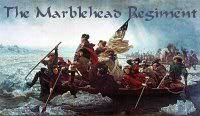Shakespeare's Portrait?
LONDON - He's a man in black with a full beard and a hoop earring. Or a clean-shaven, balding gent in a starched collar. Or a sensitive young man in a rich, red doublet.
For centuries, scholars have argued about the appearance of William Shakespeare. Britain's National Portrait Gallery announced Wednesday that a canvas by an obscure 17th-century artist is — most likely — the one true likeness of the playwright painted in his lifetime.
"I suspect this is the closest we're ever going to get to looking at the face of Shakespeare," said Tarnya Cooper, curator of the gallery's 16th-century collection.
She said there was strong evidence but no conclusive proof that the so-called Chandos portrait depicted Shakespeare.
The portrait — the first painting presented to the gallery when it opened in 1856 — forms the center of the "Searching for Shakespeare" exhibition, which opens Thursday.
Cooper said it was fitting that the institution's first acquisition was "our national poet — at least we hope it is."
Attributed to a little-known artist named John Taylor and dated by experts to between 1600 and 1610, the Chandos portrait provides an unusually bohemian image of Shakespeare. The Bard is shown dressed in black, sporting a gold hoop earring and with the strings on his white collar rakishly untied.
Earrings were worn then by "people of wit and ingenuity and creative ambition," Cooper said.
Similarities in style to portraits of other Elizabethan writers strengthened the argument that the painting is of Shakespeare, who died in 1616, she said.
There is no definitive portrait of Shakespeare painted in his lifetime. Only two likenesses, both posthumous, are widely accepted as authentic: a bust on his tomb in Stratford's Holy Trinity Church and an engraving used as a frontispiece to the Folio edition of his plays in 1623.
The National Portrait Gallery has spent a year and a half conducting tests on several alleged Shakespeare portraits, subjecting them to X-rays, ultraviolet examination, microphotography and pigment analysis.
---
The exhibition brings together six of the best-known "Shakespeare" portraits with original documents from the playwright's life, including the bond of his marriage to Anne Hathaway, the deed to his house in Stratford and the will in which he left his wife his "second-best bed."
It's unlikely to end the argument about Shakespeare's image.
 I Remember
I Remember
















































<< Home